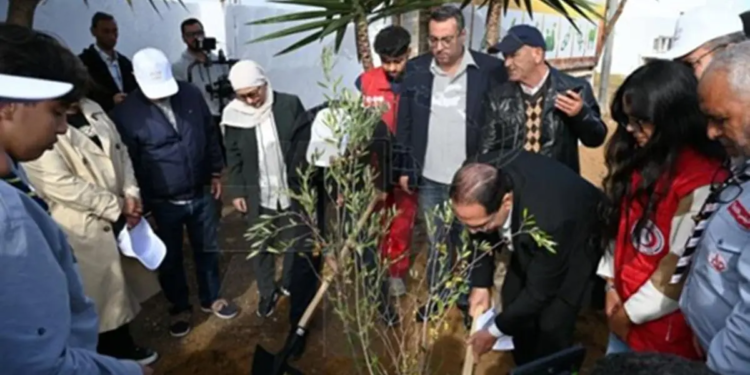From 2026, Tunisia will launch the creation of its own “Green Belt” – a forest cordon to protect against the advance of the desert, announced this Sunday, November 9, by the Minister of the Environment, Habib Obeid, during the celebrations of the National Tree Day.
Baptized “الحزام الأخضر”this vast project will extend from Gabès to Gafsa, crossing Sfax, Kairouan and Sidi Bouzid. It will constitute an ecological and economic axis crossing the areas most exposed to desertification, industrial pollution and water scarcity.
A project included in the 2026-2030 plan
The “Green Belt” is now among the major projects of the 2026-2030 national development plan.
Its objective: to create a continuous green barrier capable of slowing down silting, stabilizing the soil and reviving the plant cover in the center of the country.
The minister specified that this initiative also aims to promote Tunisian ecological capital, by integrating desert areas at the heart of climate and agricultural policies.
“The Green Belt will be a real environmental lung from which the Tunisian citizen will benefit at all levels,” he declared, recalling that two thirds of the national territory are made up of forests, pastures and agricultural land, while the desert third also contains “remarkable ecological potential”.
An old idea, a finally national project
This is not the first time that Tunisia has mentioned the idea of a green belt.
Since the 1980s, local reforestation and fight against silting projects had been carried out in the regions of Gafsa, Tozeur and Gabès, often with the support of the FAO or the UNDP.
These programs aimed to protect oases and agricultural areas threatened by the encroachment of the desert, but remained fragmented and experimental.
The “Green Belt” 2026 marks a change in scale.
For the first time, the green belt becomes an integrated state project, included in the 2026-2030 plan, with structured financing and a clear territorial ambition: to build an ecological and economic shield linking Gabès to Gafsa, the geographical heart of the country.
A shield against desertification
Tunisia loses thousands of hectares of arable land every year due to drought, overgrazing and deforestation.
In the Center and the South, sandstorms directly threaten crops, roads and infrastructure.
The “Green Belt” aims to stabilize these fragile ecosystems through massive reforestation, pasture regeneration and sustainable water management.
Its route, connecting the industrial zones of the coast to a network of oases and forests, will form a strategic green corridor on a national scale.
Also read:
Eight million new plants by March 2026: Tunisia replants its green breath








